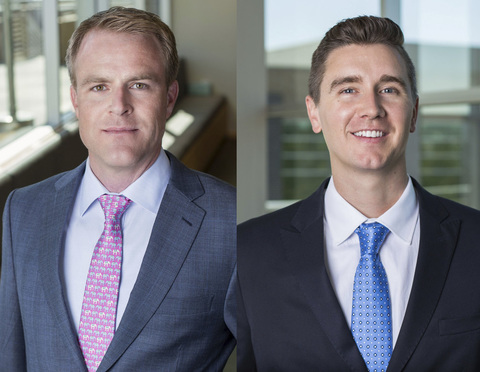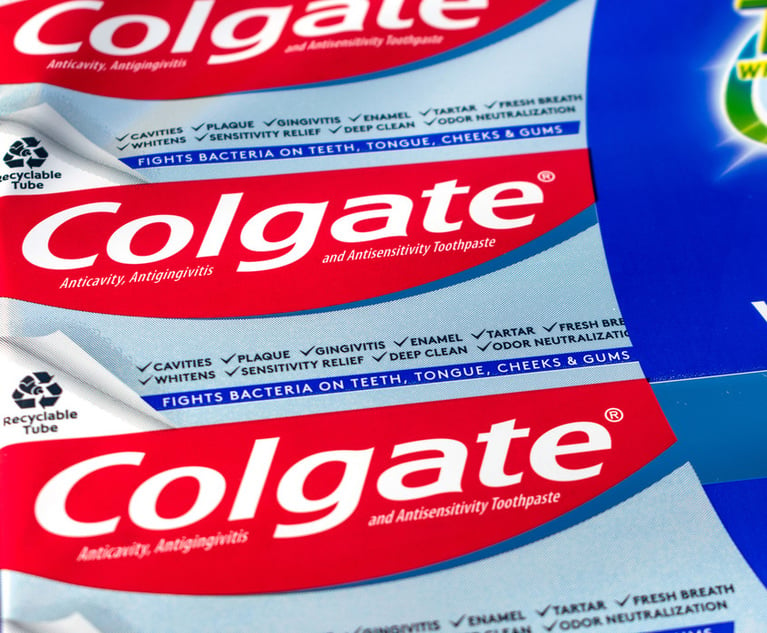Unlocking the Secret of California's Trade Secret Identification Requirement: Part 1
California trade secret law, through California Code of Civil Procedure §2019.210, presents a statutory framework unique among state and federal trade secret laws that requires trade secret plaintiffs to identify the misappropriated trade secrets before discovery commences. This article examines the genesis, purpose, and leading cases interpreting §2019.210.
October 11, 2019 at 01:56 PM
8 minute read
 Seth Sproul, left, and Tucker Terhufen, right, with Fish & Richardson.
Seth Sproul, left, and Tucker Terhufen, right, with Fish & Richardson.
California trade secret law, through California Code of Civil Procedure §2019.210, presents a statutory framework unique among state and federal trade secret laws that requires trade secret plaintiffs to identify the misappropriated trade secrets before discovery commences. This requirement serves to deter meritless trade secret actions, define the scope of relevant discovery, and provide notice to defendants so they may fashion their defenses accordingly. Understanding what this provision does—and does not—require is critical for trade secret litigants.
The California appellate courts have provided limited guidance on what constitutes an adequate identification of misappropriated trade secrets. Appellate courts will give trial courts broad discretion in making such determinations, so no precise standard exists by which to measure the sufficiency of a trade secret identification. Because such identifications also naturally include confidential information, pertinent details from prior cases are often kept under seal and hidden from the public, preventing potential litigants and courts from relying on earlier disclosures for guidance. Clear legal precedent showing what constitutes an adequate identification is thus lacking. This article examines the genesis, purpose, and leading cases interpreting §2019.210.
History of California §2019.210
Unlike other forms of intellectual property such as patents, registered copyrights or trademarks, in a trade secret case no official document exists at the outset that defines the asserted intellectual property. Without a clear delineation of the trade secrets to be litigated, parties and courts face uncertainty and complications litigating an unidentified trade secret. Recognizing the significant challenges to the parties and the Court that this situation poses, the Court of Appeal in Diodes v. Franzen (1968) 260 Cal. App. 2d 244, 253, required that the trade secret plaintiff identify its trade secrets in its complaint.
Before a defendant is compelled to respond to a complaint based upon claimed misappropriation or misuse of a trade secret and to embark on discovery which may be both prolonged and expensive, the complainant should describe the subject matter of the trade secret with sufficient particularity to separate it from matters of general knowledge in the trade or of special knowledge of those persons who are skilled in the trade, and to permit the defendant to ascertain at least the boundaries within which the secret lies.
In Diodes, the Court of Appeal found the plaintiff's complaint inadequate to state a claim for theft of trade secrets related to a manufacturing process. In 1984, the California legislature enacted the California Uniform Trade Secrets Act, in which the State Bar recommended codifying the foregoing requirements articulated in Diodes.
The result was California Code of Civil Procedure §2019.210, requiring that a plaintiff identify its trade secrets with "sufficient particularity" early in a case:
In any action alleging the misappropriation of a trade secret under the Uniform Trade Secrets Act (Title 5 (commencing with Section 3426) of Part 1 of Division 4 of the Civil Code), before commencing discovery relating to the trade secret, the party alleging the misappropriation shall identify the trade secret with reasonable particularity subject to any orders that may be appropriate under Section 3426.5 of the Civil Code.
Thus, at the outset of the case, after the court enters an appropriate protective order but before discovery commences, trade secret plaintiffs must provide to defendants a separate statement, similar to a pleading, that identifies the trade secrets at issue in the litigation. Challenges to the trade secret identification are common, as defendants resist providing any discovery until a court deems the plaintiff's identification legally sufficient. These challenges may take different forms, such as a motion for protective order and to stay discovery, or a motion for a more definite statement, or a motion to compel an adequate trade secret identification. Often, the parties engage in multiple iterations of challenges and amendments before a trade secret designation is deemed sufficient.
California courts have recognized four main policies served by this trade secret identification:
First, it promotes well-investigated claims and dissuades the filing of meritless trade secret complaints. Second, it prevents plaintiffs from using the discovery process as a means to obtain the defendant's trade secrets. Third, the rule assists the court in framing the appropriate scope of discovery and in determining whether plaintiff's discovery requests fall within that scope. Fourth, it enables defendants to form complete and well-reasoned defenses, ensuring that they need not wait until the eve of trial to effectively defend against charges of trade secret misappropriation.
Perlan Therapeutics v. Superior Court (2009) 178 Cal.App.4th 1333, 1343 (internal citations omitted). These principles can cut both ways, as plaintiffs and defendants may use them to argue the sufficiency of an identification. For example, a defendant may argue that an identification is not reasonably particular such that the court will not be able to determine a reasonable scope for discovery. A defendant may also argue that, based on the lack of specificity in an identification, it cannot form complete and well-reasoned defenses. Plaintiffs may argue that the trade secret identification provides sufficient specificity to focus discovery.
Three California Cases Interpret §2019.210
The Court of Appeal in California has provided some guidance on what is required in a trade secret identification, and has left application of §2019.210 largely up to the discretion of the trial courts. Three California cases, Advanced Modular Sputtering, Brescia, and Perlan Therapeutics, each analyze the requirements of §2019.210, addressing the sufficiency of, and problems with, different approaches to trade secret disclosure.
Advanced Modular Sputtering. The leading appellate decision applying the requirements of §2019.210 is Advanced Modular Sputtering v. Superior Court (2005) 132 Cal.App.4th 826 (AMS), decided in 2005. Plaintiff Sputtering Films asserted multiple causes of action, including breach of contract and a trade secret claim. It alleged that its former employees used trade secret information to develop competing sputtering machinery used to deposit thin films onto silicon wafers. Sputtering Films served multiple trade secret identifications and AMS objected to each one, "submitting the declarations of expert witnesses to support its contention that the claimed trade secrets are too vaguely described to distinguish them from information that is already known in the industry." The discovery referee rejected the third designation as insufficiently particular and recommended that discovery remain stayed for the trade secret claims but permitted discovery to go forward for the breach of contract and other claims. On writ petition, AMS challenged the trial court's order permitting discovery on the non-trade secret claims, and Sputtering Films challenged the trial court's rejection of its third designation.
Addressing whether the trial court erred in allowing discovery into the non-trade secret claims, the Court of Appeal found that all claims related to the trade secret misappropriation allegation and held that all such claims be stayed until service of an adequate trade secret identification. "A fair reading of this complaint and its 10 causes of action compels the conclusion that each and every cause of action hinges upon the factual allegation that AMS misappropriated Sputtered Films' trade secrets." "Where, as here, every cause of action is factually dependent on the misappropriation allegation, discovery can commence only after the allegedly misappropriated trade secrets have been identified with reasonable particularity, as required by section 2019.210."
Addressing the trade secret designation, the appellate court overturned the discovery referee's rejection of the third designation. Holding that the designation should be construed in favor of the designating party, the panel stated that "reasonable particularity" does not mean that the party alleging misappropriation "has to define every minute detail of its claimed trade secret," nor does it require a "miniature trial on the merits." Rather, plaintiffs must "make some showing that is reasonable, i.e., fair, proper, just and rational under all of the circumstances." Where technologies that are more complex are at issue, "a more exacting level of particularity may be required to distinguish the alleged trade secrets from matters already known to persons skilled in the field." The Court noted that nothing "precludes the trial court from considering relevant evidence, including expert declarations, on the adequacy of a designation[.]" Testimony from an expert that she can both understand the designation and distinguish it from publicly known information will generally be sufficient for a court to find the designation adequate.
In part 2 of this article we will review the two additional cases that interpret §2019.210 and discuss its applications.
Seth Sproul, a principal with Fish & Richardson in San Diego and is a seasoned trial lawyer who has experience in all aspects of complex patent and intellectual property litigation, including trade secret disputes, copyright actions, and RICO claims. He has successfully handled trials in district courts across the country and in hearings before the International Trade Commission. Sproul can be reached at [email protected].
Tucker Terhufen is a litigation associate in Fish & Richardson's San Diego office. His practice focuses on patent litigation, trade secret litigation, as well as other forms of commercial litigation including breach of contract and RICO claims. Mr. Terhufen also has significant experience litigating in California state courts. He can be reached at [email protected].
This content has been archived. It is available through our partners, LexisNexis® and Bloomberg Law.
To view this content, please continue to their sites.
Not a Lexis Subscriber?
Subscribe Now
Not a Bloomberg Law Subscriber?
Subscribe Now
NOT FOR REPRINT
© 2025 ALM Global, LLC, All Rights Reserved. Request academic re-use from www.copyright.com. All other uses, submit a request to [email protected]. For more information visit Asset & Logo Licensing.
You Might Like
View All



Colgate Faces Class Actions Over ‘Deceptive Marketing’ of Children’s Toothpaste
Trending Stories
Who Got The Work
J. Brugh Lower of Gibbons has entered an appearance for industrial equipment supplier Devco Corporation in a pending trademark infringement lawsuit. The suit, accusing the defendant of selling knock-off Graco products, was filed Dec. 18 in New Jersey District Court by Rivkin Radler on behalf of Graco Inc. and Graco Minnesota. The case, assigned to U.S. District Judge Zahid N. Quraishi, is 3:24-cv-11294, Graco Inc. et al v. Devco Corporation.
Who Got The Work
Rebecca Maller-Stein and Kent A. Yalowitz of Arnold & Porter Kaye Scholer have entered their appearances for Hanaco Venture Capital and its executives, Lior Prosor and David Frankel, in a pending securities lawsuit. The action, filed on Dec. 24 in New York Southern District Court by Zell, Aron & Co. on behalf of Goldeneye Advisors, accuses the defendants of negligently and fraudulently managing the plaintiff's $1 million investment. The case, assigned to U.S. District Judge Vernon S. Broderick, is 1:24-cv-09918, Goldeneye Advisors, LLC v. Hanaco Venture Capital, Ltd. et al.
Who Got The Work
Attorneys from A&O Shearman has stepped in as defense counsel for Toronto-Dominion Bank and other defendants in a pending securities class action. The suit, filed Dec. 11 in New York Southern District Court by Bleichmar Fonti & Auld, accuses the defendants of concealing the bank's 'pervasive' deficiencies in regards to its compliance with the Bank Secrecy Act and the quality of its anti-money laundering controls. The case, assigned to U.S. District Judge Arun Subramanian, is 1:24-cv-09445, Gonzalez v. The Toronto-Dominion Bank et al.
Who Got The Work
Crown Castle International, a Pennsylvania company providing shared communications infrastructure, has turned to Luke D. Wolf of Gordon Rees Scully Mansukhani to fend off a pending breach-of-contract lawsuit. The court action, filed Nov. 25 in Michigan Eastern District Court by Hooper Hathaway PC on behalf of The Town Residences LLC, accuses Crown Castle of failing to transfer approximately $30,000 in utility payments from T-Mobile in breach of a roof-top lease and assignment agreement. The case, assigned to U.S. District Judge Susan K. Declercq, is 2:24-cv-13131, The Town Residences LLC v. T-Mobile US, Inc. et al.
Who Got The Work
Wilfred P. Coronato and Daniel M. Schwartz of McCarter & English have stepped in as defense counsel to Electrolux Home Products Inc. in a pending product liability lawsuit. The court action, filed Nov. 26 in New York Eastern District Court by Poulos Lopiccolo PC and Nagel Rice LLP on behalf of David Stern, alleges that the defendant's refrigerators’ drawers and shelving repeatedly break and fall apart within months after purchase. The case, assigned to U.S. District Judge Joan M. Azrack, is 2:24-cv-08204, Stern v. Electrolux Home Products, Inc.
Featured Firms
Law Offices of Gary Martin Hays & Associates, P.C.
(470) 294-1674
Law Offices of Mark E. Salomone
(857) 444-6468
Smith & Hassler
(713) 739-1250






